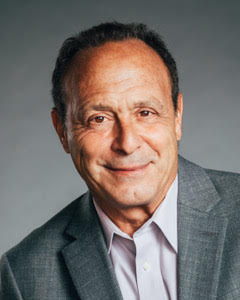Welcome back to the Savvy Blog which will from now on be updated at least weekly and so sorry for the Savvy Seasonal Vacation!
By popular demand, this week’s Guest Author is again Ken Bruss, Ed.D., picking up on the theme of Savvy and Six Sigma or Continuous Improvement. Ken has extensive experience managing the implications of Organizational and Political Savvy inherent in quality and process improvement initiatives. A primary area of focus has been New Product Development processes.
– Ken Bruss
Albert Einstein once observed that “insanity is doing the same thing over and over again, and expecting different results.” For those of us involved with change initiatives in organizations, this observation is particularly pertinent. Why when faced with compelling data that the existing processes don’t work, do seemingly sane individuals resist change?
 I encounter this routinely in my work with New Product Development teams. I used to be amazed when empirically trained engineers committed to project schedules, budgets and performance requirements that flew in the face of organizational history. Puzzled, I’d ask myself why were they ignoring data and resisting more effective project planning methods.
I encounter this routinely in my work with New Product Development teams. I used to be amazed when empirically trained engineers committed to project schedules, budgets and performance requirements that flew in the face of organizational history. Puzzled, I’d ask myself why were they ignoring data and resisting more effective project planning methods.
I’ve found the Organizational Savvy Political Styles model created by Brandon Partners to be a useful means of unraveling this conundrum. In a nutshell the Organizational Savvy model presents a continuum of behaviors influencing such actions as decision-making. At one end is the “Power of Ideas Style” which views true power as residing in SUBSTANCE–– the work itself whether facts, logic and analysis, sales and new accounts, or creative and artistic results. At the other end of the continuum is the “Power of Person Style,” which views true power as residing in POSITION POWER, so this person deftly reads between the lines, psychs out power trends, and operates from a posture of street smarts and political practicality. The Organizational Savvy model suggests that by understanding what individuals value and how they navigate in the company, we will be more effective at influencing them.
Applying Organizational Savvy to Project Planning
As you might have guessed by now, I’m more comfortable operating from a Power of Ideas posture. Most project planning decisions, however, are not framed in such black and white terms. Typically they involve both types of considerations. To understand why otherwise rational engineers people act in what appears to be an irrational manner, I’ve learned to ask myself what other factors are at play? What data am I missing, either because I’ve dismissed its significance or simply did not recognize it staring me in the face?
A useful starting question is “what is motivating the client to ask for such an aggressive schedule?” Follow-up questions might be:
- What internal or external pressures are driving their behavior?
- What organizational changes have recently occurred?
- Whose projects are being funded and which ones are being cut?
- What’s the mood like in the company?
- What new competitors are nipping at their heels?
While all of this data can be statistically analyzed, attaching appropriate meaning to these factors requires a more qualitative approach that factors in the stakeholders’ Political Styles; in essence, perception sometimes really is reality.
By utilizing these new insights, I’m then able to conduct a more nuanced and productive project planning discussion. I’m able to see more clearly the reasons why people are clinging to seemingly dysfunctional behaviors. While I’ll still rely on hard data to justify my points, by broadening my understanding of issues I’m able to focus on what truly matters to the client.

Rick Brandon is a thirty-year veteran in communication skills development. He provides corporate and public sector training, instructor certification, keynote presentations, executive coaching, and applied behavioral sciences consulting to enhance performance and organizational results.
